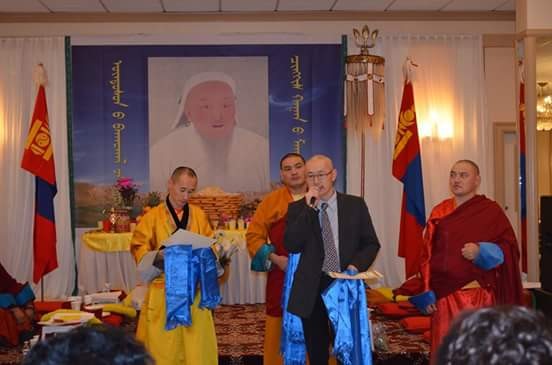
A memorial ritual for Chinggis Khaan was led by Mongolian Buddhist monks for the first time in Chicago, Illinois.
Some people believe Chinggis Khaan was the reincarnation of Ochirvaani, a fierce deity and protector in Mongolian Buddhism. Historians date the origin of this belief to over 700 years ago, when the tradition of holding memorial ceremonies for Chinggis Khaan emerged. They were carried out by the third son of Chinggis Khaan and second emperor of the Mongol Empire, Uguudei Khaan, and later prac- ticed by Kublai Khaan, Chinggis Khaan’s grandson and the fifth emperor of the Mongol Empire. Reportedly, Buddhists monks wrote a scripture specifically for the memorial.
According to historic records, there was a special monk who dedicated his worship to Chinggis Khaan’s flag and burial during the reign of Abtai San Khaan, in the late 16th century. Memorial services were carried out at Tug Chinggis Temple. The temple was built in 1863 by a descendant of Chinggis Khaan, Duke Bat Ochiryn Togtokhtor (more commonly known as To Van), and was active until political repression ordered its destruction in 1937. Although ritual items for the memorial were destroyed, details of the memorial were preserved through documentation.
Researchers plan to publish a book about the Chinggis Khaan memorial ritual in Mongolian and Tibetian, written based on ancient scriptures and documents kept at the Central Library and the library of Gandantegchinlen Monastery.
The monks who performed the ritual in Chicago noted that the ritual is representative of the Mongolian public’s respect for Chinggis Khaan, and said that they organized the ritual exactly as specified in scriptures to preserve the ritual and restore its significance.
Ambassador Extraordinary and Plenipotentiary from Mongolia to the USA B.Altangerel, Mongolians living in the U.S., and representatives from Mongolian NGOs in the USA and Mongolian associations took part in the ritual.
Mongolian, English, and Tibetan versions of the ritual’s scripture were on display during the event.

